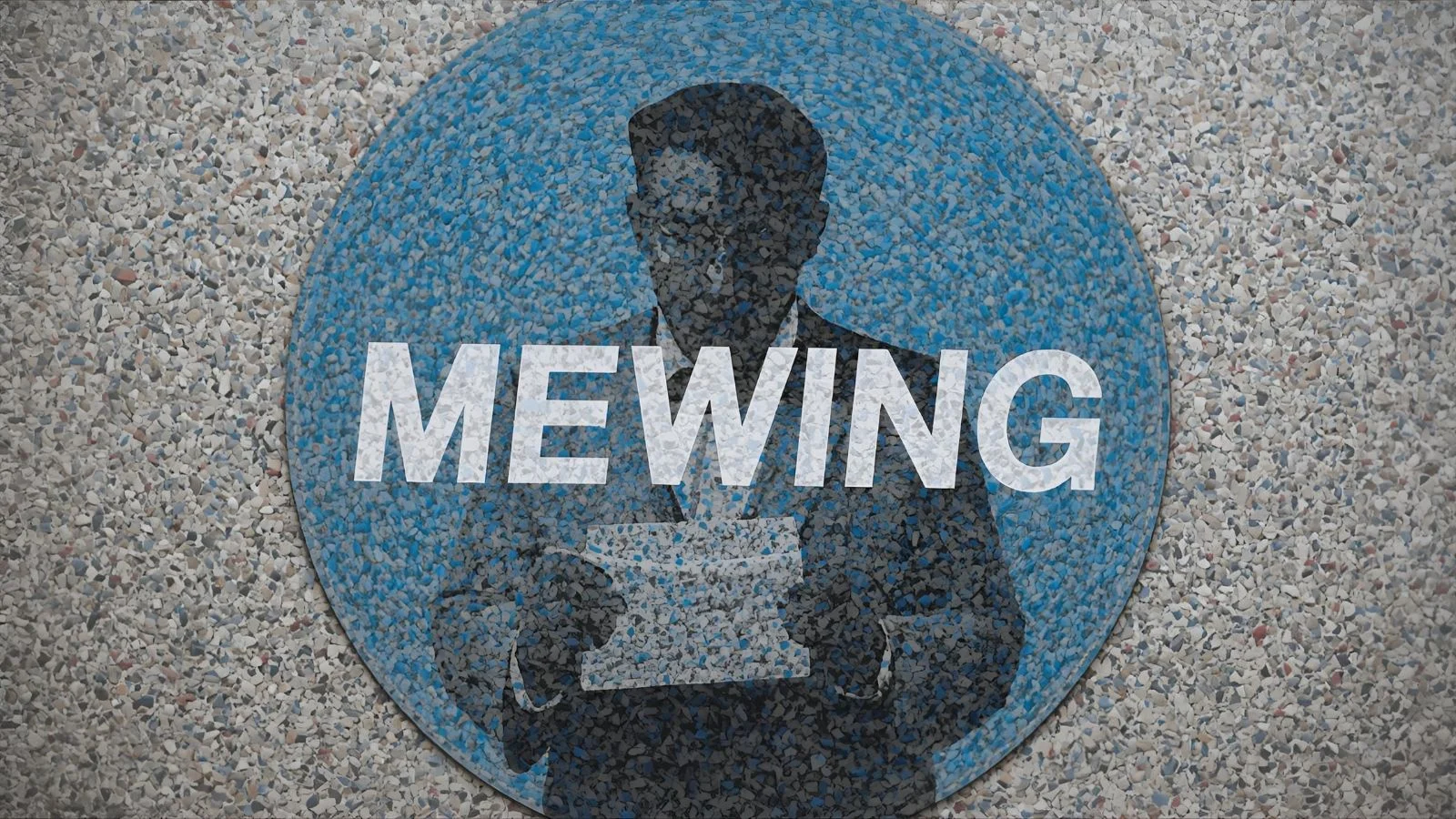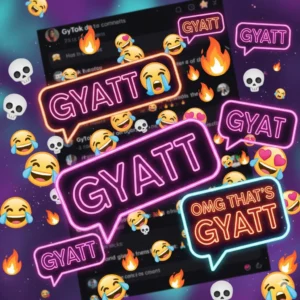Slang evolves faster than nearly any other part of language. Every year, expressions surface on TikTok, Instagram, X (formerly Twitter), and niche forums, then spread into mainstream conversation. Some words burn out quickly, while others stick around and reshape the way we communicate.
One term that has fascinated both linguists and cultural observers over the last decade is “mewing.” Originally tied to a specific orthodontic exercise promoted online, the word has since developed slang meanings that extend beyond its medical roots.
In 2025, “mewing” is no longer confined to its original definition. It carries layered cultural, social, and digital meanings—from body aesthetics to confidence signaling, to ironic slang in online communities. This article explores the term in depth, while also providing polite, professional, and casual alternatives for when people want to adjust their tone.
The Origins of “Mewing”
The term “mewing” began with Dr. John Mew and Dr. Mike Mew, orthodontists who promoted a practice of resting the tongue against the roof of the mouth to improve jawline structure, posture, and facial aesthetics.
The method went viral in the late 2010s as influencers and fitness communities framed it as a natural way to sharpen one’s jawline without surgery.
But, like many internet-born ideas, the word mewing quickly jumped from medical to memetic use. By 2020, “mewing” wasn’t just about orthodontics—it became a cultural shorthand.
What Does “Mewing” Mean in Slang?
By 2025, “mewing” has three major slang interpretations, depending on context:
- Jawline Flexing (Literal/Slang Crossover)
When someone says they’re “mewing,” they often mean they’re consciously positioning their jawline or posing for a sharper facial structure in selfies. Example:
- “Bro was mewing in every picture at the party.”
- “Bro was mewing in every picture at the party.”
- Projecting Confidence/Irony
In Gen Z and Gen Alpha online spaces, “mewing” can also mean trying too hard to look attractive or acting with exaggerated self-confidence.
- “He walked in mewing like he owned the place.”
- “He walked in mewing like he owned the place.”
- Metaphor for Subtle Self-Improvement
On productivity and self-growth forums, “mewing” sometimes appears metaphorically, describing small, consistent habits that add up to bigger changes.
- “I’m mewing my way through this semester—tiny steps, big results.”
- “I’m mewing my way through this semester—tiny steps, big results.”
This evolution mirrors how slang often moves from literal → ironic → metaphorical.
Why Has “Mewing” Become Popular in 2025?
Several cultural forces explain why the term has held strong:
- Social Media Aesthetics: Platforms like TikTok and BeReal emphasize facial presentation. Mewing naturally fits this visual culture.
- Digital Irony: Younger generations love reclaiming and exaggerating niche terms. “Mewing” is used half-seriously, half-jokingly.
- Self-Improvement Culture: In 2025, micro-habits are trending. People see “mewing” as symbolic of low-effort, long-term gains.
- Identity & Meme Culture: The word’s odd sound—short, memeable, and easy to pair with cat-related jokes—keeps it alive.
Slang Nuances: Polite, Professional, and Casual Alternatives
While slang works in informal contexts, it doesn’t always suit professional communication, formal writing, or polite conversation. For those situations, people often need alternatives that capture the same sentiment but with adjusted tone.
Here are 10 carefully crafted alternatives to “mewing,” grouped by tone, with examples and explanations.
1. Polishing One’s Image (Polite)
- Meaning: Refining appearance or presentation.
- Example: “He’s been polishing his image on LinkedIn lately.”
- Nuance: Works in both personal and professional discussions, avoids slang while still suggesting self-improvement.
2. Projecting Confidence (Professional)
- Meaning: Displaying self-assurance outwardly.
- Example: “She projected confidence during the client presentation.”
- Nuance: Perfect for workplace communication; no slang undertone.
3. Sharpening the Look (Casual)
- Meaning: Adjusting style or pose to look better.
- Example: “He was sharpening the look for his photoshoot.”
- Nuance: Informal but stylish; fits lifestyle or fashion conversations.
4. Fine-Tuning Presence (Polite/Professional)
- Meaning: Adjusting posture, expression, or demeanor to leave a better impression.
- Example: “She fine-tuned her presence before stepping on stage.”
- Nuance: Neutral and versatile.
5. Self-Framing (Casual/Creative)
- Meaning: Positioning oneself deliberately in pictures or interactions.
- Example: “He was definitely self-framing during that interview.”
- Nuance: Creative phrase often used in media or photography circles.
6. Micro-Improving (Professional/Trend-Savvy)
- Meaning: Engaging in small, consistent improvements.
- Example: “The team is micro-improving workflows every week.”
- Nuance: Trend-conscious term for workplaces that value innovation.
7. Polite Posing (Casual/Playful)
- Meaning: Adjusting stance or expression in a mild, socially acceptable way.
- Example: “He was polite-posing in every family photo.”
- Nuance: Lighthearted but not mocking.
8. Confidence Sculpting (Creative/Professional)
- Meaning: Intentionally shaping how one is perceived.
- Example: “Through practice, she’s been confidence-sculpting her public persona.”
- Nuance: Ideal for coaching, public speaking, and personal growth contexts.
9. Presence Crafting (Polite/Professional)
- Meaning: Developing one’s aura, appearance, or reputation.
- Example: “He’s been presence-crafting before moving into leadership.”
- Nuance: Strong in corporate or leadership discussions.
10. Subtle Self-Styling (Casual/Neutral)
- Meaning: Small but deliberate aesthetic or behavioral adjustments.
- Example: “She’s always subtle self-styling in her stories.”
- Nuance: Balances casual charm with sophistication.
Choosing the Best Alternative: Tone Matters
The right alternative depends on context, audience, and intention:
- Polite Tone: Use terms like polishing one’s image or presence crafting when you want to sound respectful or diplomatic.
- Professional Tone: Opt for projecting confidence or micro-improving in workplaces, resumes, or presentations.
- Casual Tone: Go with sharpening the look or polite posing for everyday conversations or social media captions.
The Future of “Mewing” as Slang
In 2025, “mewing” continues to evolve. Predictions among linguists suggest:
- It may stabilize as a long-term slang, much like “flexing” or “glow-up.”
- It could split into two paths: one remaining tied to aesthetics, the other symbolizing subtle self-improvement.
- There’s potential for regional variations—already, in some Asian online spaces, “mewing” is being used interchangeably with “face-training.”
Slang, after all, is not static; it shifts with digital culture.
Conclusion
“Mewing” is far more than an internet orthodontic fad. In 2025, it stands as a multi-layered slang expression that blends aesthetics, irony, and metaphor.
Whether you’re using it playfully with friends, exploring its professional alternatives, or understanding its cultural significance, knowing the nuances of this word provides both linguistic richness and social awareness.
In a world where language evolves as quickly as digital trends, “mewing” is proof that slang carries deeper meaning than surface jokes—it reflects how generations see identity, confidence, and improvement.










